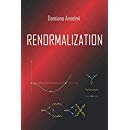We study phenomena predicted by a renormalizable, CPT invariant extension of the Standard Model that contains higher-dimensional operators and violates Lorentz symmetry explicitly at energies greater than some scale $\Lambda_{L}$. In particular, we consider the Cherenkov radiation in vacuo. In a rather general class of dispersion relations, there exists an energy threshold above which radiation is emitted. The threshold is enhanced in composite particles by a sort of kinematic screening mechanism. We study the energy loss and compare the predictions of our model with known experimental bounds on Lorentz violating parameters and observations of ultrahigh-energy cosmic rays. We argue that the scale of Lorentz violation $\Lambda_{L}$ (with preserved CPT invariance) can be smaller than the Planck scale, actually as small as $10^{14}$-$10^{15}$ GeV. Our model also predicts the Cherenkov radiation of neutral particles.
Phys. Rev. D 83 (2011) 056010 | DOI: 10.1103/PhysRevD.83.056010
We consider renormalizable Standard-Model extensions that violate Lorentz symmetry at high energies, but preserve CPT, and do not contain elementary scalar fields. A Nambu–Jona-Lasinio mechanism gives masses to fermions and gauge bosons, and generates composite Higgs fields at low energies. We study the effective potential at the leading order of the large-$N_{c}$ expansion, prove that there exists a broken phase and study the phase space. In general, the minimum may break invariance under boosts, rotations and CPT, but we give evidence that there exists a Lorentz invariant phase. We study the spectrum of composite bosons and the low-energy theory in the Lorentz phase. Our approach predicts relations among the parameters of the low-energy theory. We find that such relations are compatible with the experimental data, within theoretical errors. We also study the mixing among generations, the emergence of the CKM matrix and neutrino oscillations.
Phys. Rev. D83 (2011) 056005 | DOI: 10.1103/PhysRevD.83.056005
We study the one-loop renormalization of high-energy Lorentz violating four fermion models. We derive general formulas and then consider a number of specific models. We study the conditions for asymptotic freedom and give a practical method to determine the asymptotic-freedom domain. We also point out that in some models the RG flow contains “rational” Zimmermann trajectories that might hide new symmetries.
Phys. Rev. D81 (2010) 085043 | DOI: 10.1103/PhysRevD.81.085043
We study a QED extension that is unitary, CPT invariant and super-renormalizable, but violates Lorentz symmetry at high energies, and contains higher-dimension operators (LVQED). Divergent diagrams are only one- and two-loop. We compute the one-loop renormalizations at high and low energies and analyse the relation between them. It emerges that the power-like divergences of the low-energy theory are multiplied by arbitrary constants, inherited by the high-energy theory, and therefore can be set to zero at no cost, bypassing the hierarchy problem.
Phys. Rev. D 81 (2010) 085042 | DOI: 10.1103/PhysRevD.81.085042
If Lorentz symmetry is violated at high energies, interactions that are usually non-renormalizable can become renormalizable by weighted power counting. Recently, a CPT invariant, Lorentz violating extension of the Standard Model containing two scalar-two fermion interactions (which can explain neutrino masses) and four fermion interactions (which can explain proton decay) was proposed. In this paper we consider a variant of this model, obtained suppressing the elementary scalar fields, and argue that it can reproduce the known low energy physics. In the Nambu$-$Jona-Lasinio spirit, we show, using a large $N_c$ expansion, that a dynamical symmetry breaking takes place. The effective potential has a Lorentz invariant minimum and the Lorentz violation does not reverberate down to low energies. The mechanism generates fermion masses, gauge-boson masses and scalar bound states, to be identified with composite Higgs bosons. Our approach is not plagued by the ambiguities of approaches based on non-renormalizable vertices. The low-energy effective action is uniquely determined and predicts relations among parameters of the Standard Model.
Eur.Phys.J. C65 (2010) 523-536 | DOI: 10.1140/epjc/s10052-009-1211-z
arXiv:0904.1849 [hep-ph]
We study the Standard-Model extensions that have the following features: they violate Lorentz invariance explicitly at high energies; they are unitary, local, polynomial and renormalizable by weighted power counting; they contain the vertex $(LH)^2$, which gives Majorana masses to the neutrinos after symmetry breaking, and possibly four fermion interactions; they do not contain right-handed neutrinos, nor other extra fields. We study the simplest CPT invariant Standard-Model extension of this type in detail and prove the cancellation of gauge anomalies. We investigate the low-energy recovery of Lorentz invariance and comment on other types of extensions.
Phys.Rev. D79 (2009) 025017 | DOI: 10.1103/PhysRevD.79.025017
arXiv:0808.3475 [hep-ph]
We classify the local, polynomial, unitary gauge theories that violate Lorentz symmetry explicitly at high energies and are renormalizable by weighted power counting. We study the structure of such theories and prove that renormalization does not generate higher time derivatives. We work out the conditions to renormalize vertices that are usually non-renormalizable, such as the two scalar-two fermion interactions and the four fermion interactions. A number of four dimensional examples are presented.
Annals Phys. 324 (2009) 1058-1077 | DOI: 10.1016/j.aop.2008.12.007
arXiv:0808.3474 [hep-th]
We construct local, unitary gauge theories that violate Lorentz symmetry explicitly at high energies and are renormalizable by weighted power counting. They contain higher space derivatives, which improve the behavior of propagators at large momenta, but no higher time derivatives. We show that the regularity of the gauge-field propagator privileges a particular spacetime breaking, the one into into space and time. We then concentrate on the simplest class of models, study four dimensional examples and discuss a number of issues that arise in our approach, such as the low-energy recovery of Lorentz invariance.
Annals Phys. 324 (2009) 874-896 | DOI: 10.1016/j.aop.2008.12.005
arXiv:0808.3470 [hep-th]
We study a class of Lorentz violating quantum field theories that contain higher space derivatives, but no higher time derivatives, and become renormalizable in the large N expansion. The fixed points of their renormalization-group flows provide examples of exactly “weighted scale invariant” theories, which are noticeable Lorentz violating generalizations of conformal field theories. We classify the scalar and fermion models that are causal, stable and unitary. Solutions exist also in four and higher dimensions, even and odd. In some explicit four dimensional examples, we compute the correlation functions to the leading order in 1/N and the critical exponents to the subleading order. We construct also RG flows interpolating between pairs of fixed points.
JHEP 0802 (2008) 051 | DOI: 10.1088/1126-6708/2008/02/051
arXiv:0801.1216 [hep-th]
We classify the unitary, renormalizable, Lorentz violating quantum field theories of interacting scalars and fermions, obtained improving the behavior of Feynman diagrams by means of higher space derivatives. Higher time derivatives are not generated by renormalization. Renormalizability is ensured by a “weighted power counting” criterion. The theories contain a dimensionful parameter, yet a set of models are classically invariant under a weighted scale transformation, which is anomalous at the quantum level. Formulas for the weighted trace anomaly are derived. The renormalization-group properties are studied.
Phys. Rev. D 76 (2007) 125011 | DOI: 10.1103/PhysRevD.76.125011

 Quantum Gravity
Quantum Gravity 


